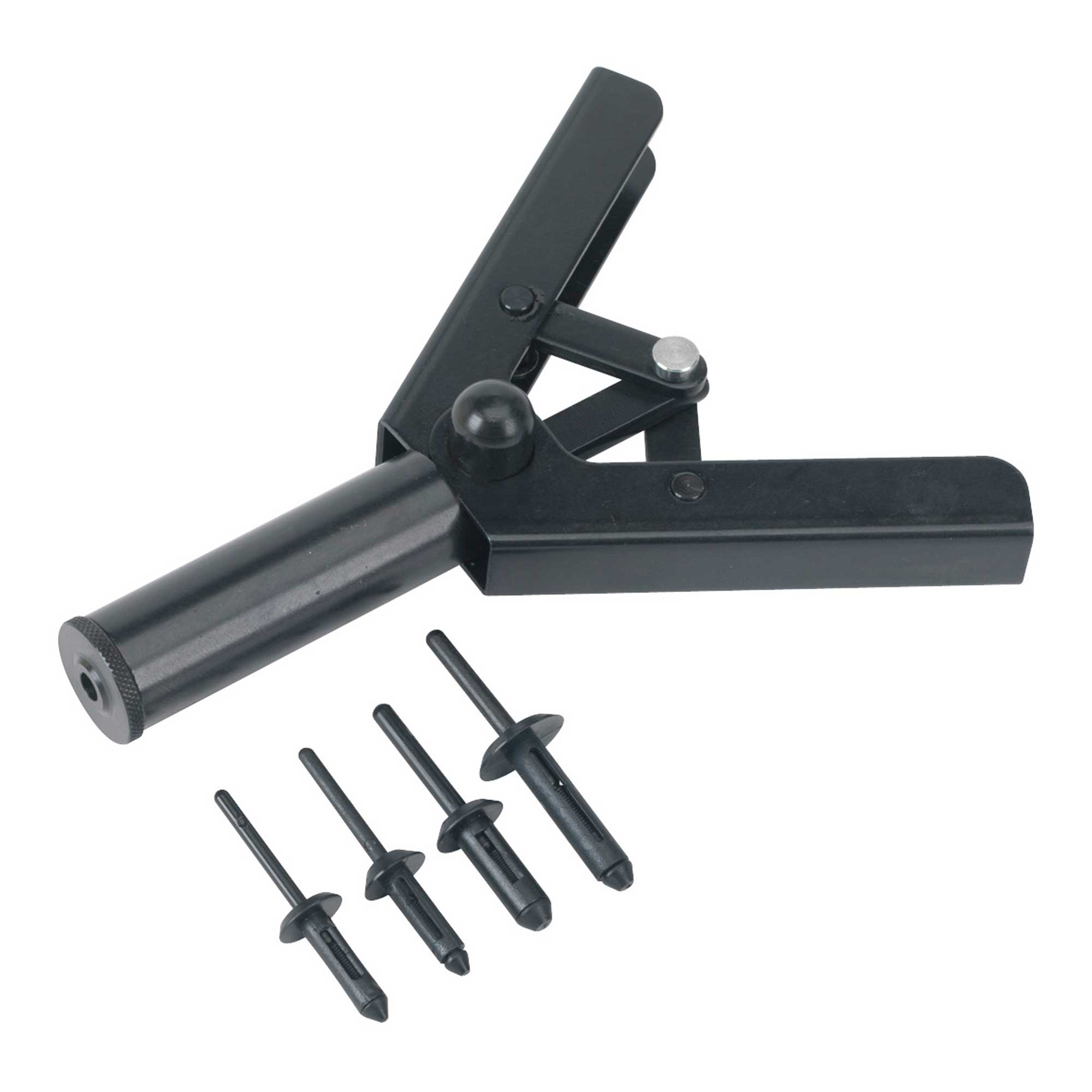

(This is probably not the method of choice if you value the appearance of the object that’s riveted this procedure can mar the surface.) Remember, it’s always a good idea to wear safety glasses when drilling into metal.Ī third method is crude, but it works. If it doesn’t, try the next larger-size drill bit. Insert the bit into the drill, center the bit in the hole, and drill at a slow speed through the center of the rivet’s sleeve.Next, find a twist drill bit that’s just the next size larger than the rivet’s mandrel.First, if the rivet doesn’t have a discernible center, you’ll have to create a divot, a place for the drill to start, using a hammer and a center punch or narrow nail set.If you’re only removing a few rivets, a more accessible method is to use a plain drill bit. Insert the tool into a drill, position the guide onto the rivet head, and drill the head off and the rivet out.Typically used by aircraft mechanics, the tool consists of a drill bit and guide that positions the bit over the center of the rivet.If you have a lot of rivet removals in your future-let’s say you’re restoring an Airstream trailer or an old Cessna-you might consider buying a dedicated rivet removal tool. Option 1: Drill it Out With a Dedicated Tool There are a few methods to remove a rivet. For instance, when replacing sections of gutter or downspouts, you may need to remove rivets to disassemble the parts. Occasionally, you’ll need to reverse the procedure and remove the rivet. As involved as that sounds, the whole procedure takes less than a couple of seconds.

The mandrel then breaks off at a predetermined weak spot, leaving the rivet flush with the surface of the material. As the mandrel is withdrawn, it causes the tube to swell, locking the two pieces together. The rivet is inserted into the hole and, using a rivet gun the mandrel is withdrawn through the tube. How to Install a Pop RivetĪfter the two sections to be riveted are aligned, a hole that’s the diameter of the rivet is drilled through the layers to be joined. Made of a soft metal, usually aluminum or copper, a pop rivet consists of a small nail, called a mandrel, inserted into a tube. Around the house, they are most typically used to join sections of gutters and downspout fittings. Pop rivets are used to join two pieces of thin material, such as plastic or aluminum, from one side, eliminating the need to access the back of the workpiece. (“Pop rivet” is actually a genericized term for the Stanley Engineered Fastening’s POP brand rivets.) These days, the rivet you will most likely encounter is a smaller, lighter-duty version called a blind or “pop” rivet. While one worker applied pressure to the head, another worker then peened over the tail protruding from the steel with a manual or pneumatic hammer. These rivets were thick iron plugs with mushroom-shaped heads that were heated until they were red-hot and placed into holes in the steel. Before the widespread use of the structural bolt, rivets were used to join steel plates that became bridges, skyscrapers, tanks, airplanes, and ships. Use with any 3/8" variable-speed drill or drill press (not included).If you hear the word “rivet” and immediately think of an industrious woman named Rosie, your point of reference would be sometime in the last century. Works on standard head, flat head, or large head rivets. Includes cobalt drill bits and serrated noses for 3/32", 1/8", 5/32", and 3/16" diameter rivets. A special drill bit inside is sized specifically to fit the rivet you're drilling. Holding the knurled outer handle prevents the rivet from spinning while also making it easier to hold the drill parallel to the rivet shank.

The heart of this brilliant tool is a special serrated nose that digs into the head of the rivet. Not only is this frustrating and difficult to fix, it doesn't do the hole any good either! This clever tool is designed to prevent the rivet from spinning while you drill it. If you've ever tried to drill out blind rivets, chances are good that on at least one occasion your drill bit dug into the rivet and spun it around in the hole. No more watching helplessly as your drill turns that pesky pop rivet into a toothless (but all too effective) hole reamer!


 0 kommentar(er)
0 kommentar(er)
